K ate Murrays alarm clock went off at 5:30 a.m. She forced her eyes open. Her college classes had never started before noon.
The day beforethe Fourth of July 2005Kate had loaded her Mustang and driven up the coast from San Diego to Los Angeles. Now unopened boxes sat scattered around the little house. She still had no furniture, and she missed her dog.
Kate dragged herself out of bed. In the bathroom mirror she looked skinny. The weeks leading up to sushi school had been stressful, and shed stopped eating again.
On the drive to the academy she hit L.A. traffic. By the time she finally reached Hermosa Beach, she was running late. Fit-looking people on Rollerblades glided down the strip along the sandy beach, and several surfers were already out testing the waves. The Pacific Ocean stretched to the horizon. A block from the beach, Kate located the Hama Hermosa sushi restaurant and hurried inside.
She entered the foyer and saw a small dining room on her left with tables, a couple of booths, and a shiny red sushi bar. The restaurant appeared to be deserted, except for a gold Buddha sitting in an alcove.
Through a cutout in the hallway wall Kate glimpsed people. She followed the hall and stepped into a large space with a high ceiling and skylights. A second red sushi bar ran across the back wall. Down the center of the room stretched a stainless-steel table with sinks built into it, like in a chemistry lab.
All eyes turned and looked at Kate. Her classmates had already taken all the spots at the table, except for the one closest to the Japanese chef at the head of the table. Crap, Kate thought. She walked up to the remaining space. Everyone was standing. There were no chairs.
The chef was a short man with a shaved head. He introduced himself as Toshi Sugiura, chief executive officer (CEO) of the California Sushi Academy. He was also executive chef of the Hama Hermosa restaurant. The restaurant and the academy shared the building.
Toshi was a pioneer of American sushi. He had started serving sushi in Los Angeles in 1978, before most Americans had even heard of it. Throughout the 1980s and early 1990s, Toshis sushi bar and restaurantHama Venice, in Venice Beach, just south of Santa Monicahad been one of the hottest sushi spots in all of L.A. Two years ago Toshi had shifted his efforts to the current restaurant, and it hadnt been long before Phil Jackson, coach of the L.A. Lakers, had stopped by to inscribe his signature on the wall.
Toshi had founded the California Sushi Academy in 1998. Opening a school for sushi chefs was unprecedented. For nearly 200 years, becoming a sushi chef had required a long apprenticeshipoften five or more years. Toshi wanted to train people in a few months.
Toshi hired staff to manage the school and to teach. When the academy opened, three-quarters of the applicants were not even Asian. Toshi accepted them all. He couldnt be certain, but he assumed that many of his fellow Japanese sushi chefs considered him a traitor for welcoming outsiders into the world of sushi. The way Toshi saw it, Americans had already embraced sushi, and it would be foolish not to train American chefs. Since then, a few other sushi schools had opened in L.A., including the Sushi Chef Institute, run by a former instructor at Toshis academy. So far, these were the only formal training programs for sushi chefs in the United States.
Anyone could apply to the California Sushi Academy. Toshi didnt require his students to have restaurant or kitchen experience. Hobbyists and home cooks had attended the school, along with experienced chefs, including seasoned veterans of some of Americas best kitchens. Not all of the graduates went on to become professional sushi chefs. Over the years, the proportion of non-Asian students had remained high.
Ohaiy gozaimasu! Toshi bellowed to the class. This meant Good morning in Japanese. But around the restaurant, the chefs said it whenever they arrived for work, even if it was afternoon or evening.
gozaimasu! Toshi bellowed to the class. This meant Good morning in Japanese. But around the restaurant, the chefs said it whenever they arrived for work, even if it was afternoon or evening.
Toshi taught the class another word. Irasshaimase! That meant Welcome. Sushi chefs yelled it whenever a customer walked in. Most Americans thought Japanese people were supposed to act quiet and dignified. But in old Tokyo, sushi chefs were loud and boisterous.
Kate liked Toshi immediately. He was cheerful and stern at the same time, like a monk who was also a kung-fu warrior. Toshi asked the nine students to introduce themselves. Kate looked around at the people who would be her classmates for the next twelve weeks. There were six men and two other women. It had never occurred to her that most of her classmates would be men. It hadnt occurred to her that there was anything unusual about a woman, or her in particular, wanting to become a sushi chef. Kate didnt see why a 20-year-old Irish-Italian girl with a pierced belly button and a nose stud couldnt make sushi.
The other students were also young, and a majority of them were white. They had come to the academy for a variety of reasons. Most of them had restaurant kitchen experience, and a few already had experience making sushi. Kate had neither.
One young man had made his start mass-producing sushi at a Whole Foods grocery store in North Carolina, and he wanted to move up to restaurant work. Another had seen how widespread sushi had become, and he hoped to purchase his own sushi restaurant in southern California. A man from El Paso, Texas, had been sent by his company, a real-estate and restaurant-development firm, because sushi was the hot new meal on the Mexican border.
Several of the students, including a woman from Barcelona, wanted to open their own catering businesses. A 17-year-old blond boy from Colorado thought working behind a sushi bar would be a great way to meet girls. There was one young woman, still in high school, who looked Japanese. She was from L.A.her dad wanted her to learn Japanese food. There were two guys who looked Filipino or Indonesian, but they were both American.
At the far end of the table was a man from Japan. He introduced himself in broken English, in a quiet voice. Apparently, hed come all the way from Japan to learn sushi in California. That seemed odd.
Toshi turned the class over to the academys coordinator for student affairs, a Japanese-American man named Jay Terauchi. Jay would be keeping his eye on the students throughout the semester and would help them with whatever they needed.
Jay handed out their uniforms: black pants, white chefs jackets embroidered with the words California Sushi Academy, and white pillbox-style chefs caps. Dressed in her street clothes, Kate had a slim and shapely figure. But her chefs jacket was too big, and when she put it on, she looked like a kitchen appliance.
Finally, Toshi introduced the academys chief instructor, who would be teaching most of the classes. Kate was surprised to see that the instructor wasnt Japanese.
My name is Zoran, he said in an Australian accent. His full name was Zoran Lekic. The exotic-sounding name came from his Yugoslav ancestry. Hed grown up in Australia.

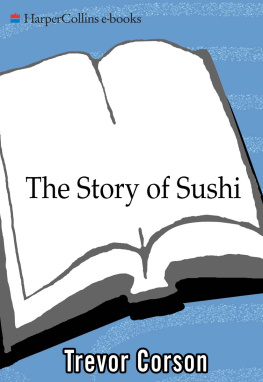
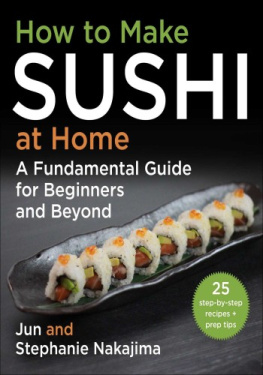



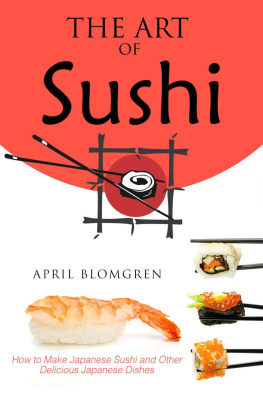
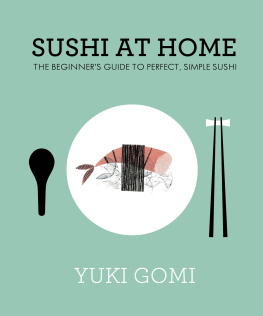
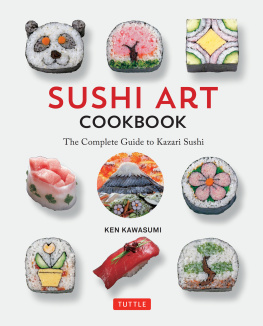
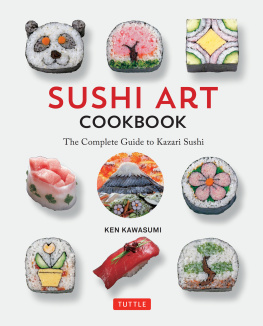

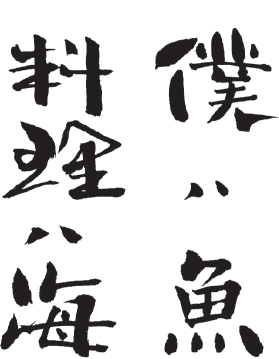
 gozaimasu! Toshi bellowed to the class. This meant Good morning in Japanese. But around the restaurant, the chefs said it whenever they arrived for work, even if it was afternoon or evening.
gozaimasu! Toshi bellowed to the class. This meant Good morning in Japanese. But around the restaurant, the chefs said it whenever they arrived for work, even if it was afternoon or evening.